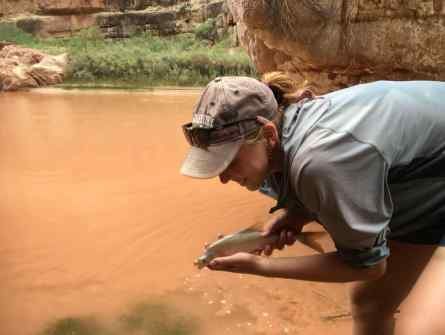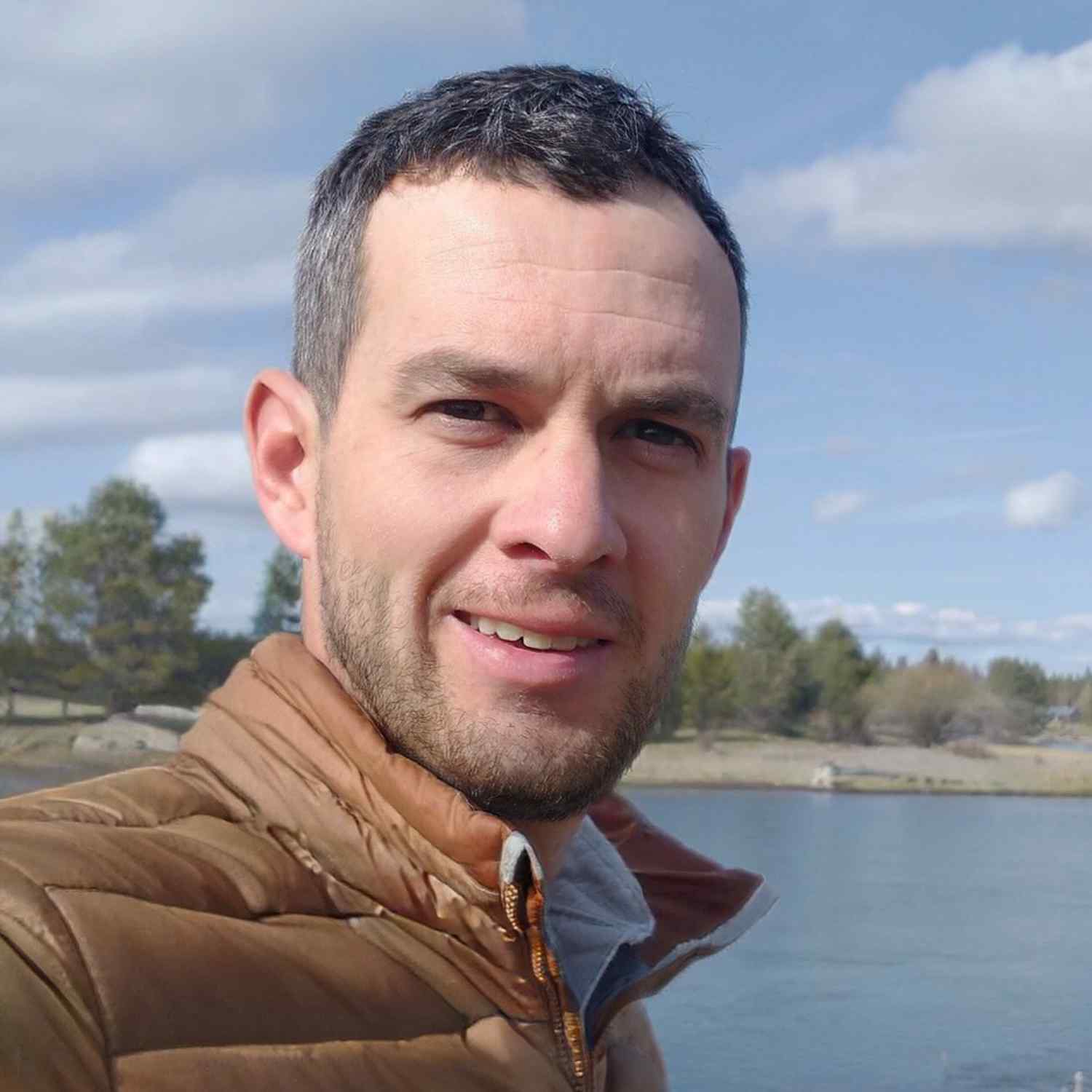Southern Utah is home to a wide variety of species, from desert reptiles to aquatic insects. In this week’s column, Science Moab highlights key takeaways from conversations with a few scientists who study those species: native fish ecologist Brian Healy, insect ecologist Anya Metcalfe, sound ecologist Skip Ambrose, and reptile physiological ecologist Geoff Smith.
Science Moab: Do most desert animals you study have similar survival strategies?
Geoff Smith: There are really different strategies. For example, I’ve been privileged to work with the Mojave desert tortoise this spring. They stay burrowed for a large proportion of the year. A lot of their lives are spent not doing very much at all. They also have a really remarkable anatomical and physiological adaptation. They’ve got a gigantic urinary bladder that can hold about a third of their body weight, and they have this really dilute urine. They can drink a ton of water whenever that water is available, and then reabsorb it later on in the year. This is one of the reasons people are discouraged from picking up a desert tortoise, because if you pick it up, it pees all over your feet. Then you set it down, and you leave. But it could be eight weeks before it rains again. This turtle has been carrying around a Camelbak inside its body, and now that’s gone. But they still need that water.
•••
Science Moab: Specifically, you’re studying the aquatic insects in the Colorado River through the Grand Canyon. How are these insects being affected by the fact that they’re below a very large dam?
Anya Metcalfe: So the pre-dam Colorado River is very warm and turbid with a lot of suspended sediment, and it fluctuates in temperature with the seasons of the year. It’s fairly stable throughout the whole year, but there are hydro peaking flows, where water is released from the dam in response to peak power demand, causing artificial tides in the river where the water is going up and down throughout the day. We’ve been finding evidence that these hydro peaking operations are having an effect on aquatic insect populations. Many aquatic insects lay their eggs pretty close to the shore on rocks and submerged vegetation, not expecting that the river is going to drop out on them in an hour. So those eggs are being exposed to dry air, and drying up.
•••
Science Moab: In general, what are you listening for with bird acoustics?
Skip Ambrose: There are two primary focuses of our study. One is to study the presence or absence of birds and the relative abundance of these birds. Another use is to understand the potential negative impacts these birds experience due to man-made noise. For these recordings, we have kind of a code system. Every bird species has a code. Every human caused sound has a code. During these sample recordings, we write down everything that we hear. For example, in a 10-second period, we might hear 2 or 3 birds and 2 or 3 human-caused sounds like distant vehicles or cattle. When we record for multiple years, we see these trends of airplane noise going up, airplane noise going down. We note that the yellow warblers are going up or that the yellow warblers are going down. It’s difficult to measure exactly how the birds are being affected. Some birds will increase their amplitude to overcome human-caused sounds. But at some point, birds can only increase their volume by so much. The bigger questions we look to answer are: did the bird populations go up or down? Was the sound a large part of that? We’ve learned that even if birds can hear each other, they don’t necessarily hear distress or alarm calls of other birds. If they hear something like a red tailed hawk or a peregrine falcon and issue an alarm call, they might not know why they can’t hear each other.
•••
Science Moab: Why is the humpback chub endangered?
Brian Healy: The humpback chub and other Colorado River endemic fishes have experienced incredible change to their habitat. It probably started with the introduction of non-native fish. Then we started building dams on the Colorado River that fragmented and profoundly changed the ecosystem, including limiting temperatures to cold, stable conditions in which the chub couldn’t reproduce very well. For example, the Glen Canyon Dam changed the river discharge from being seasonably warm and muddy, to colder and more stable year-round. Around Moab and in the Upper Colorado River, you don’t have that same temperature issue, so you have many more warm-water invasive species that we’re concerned may expand into the Grand Canyon in the future.
Science Moab is a nonprofit dedicated to engaging community members and visitors with the science happening in Southeast Utah and the Colorado Plateau. To learn more and listen to the rest of these interviews, visit www.sciencemoab.org/radio. This interview has been edited for clarity.




